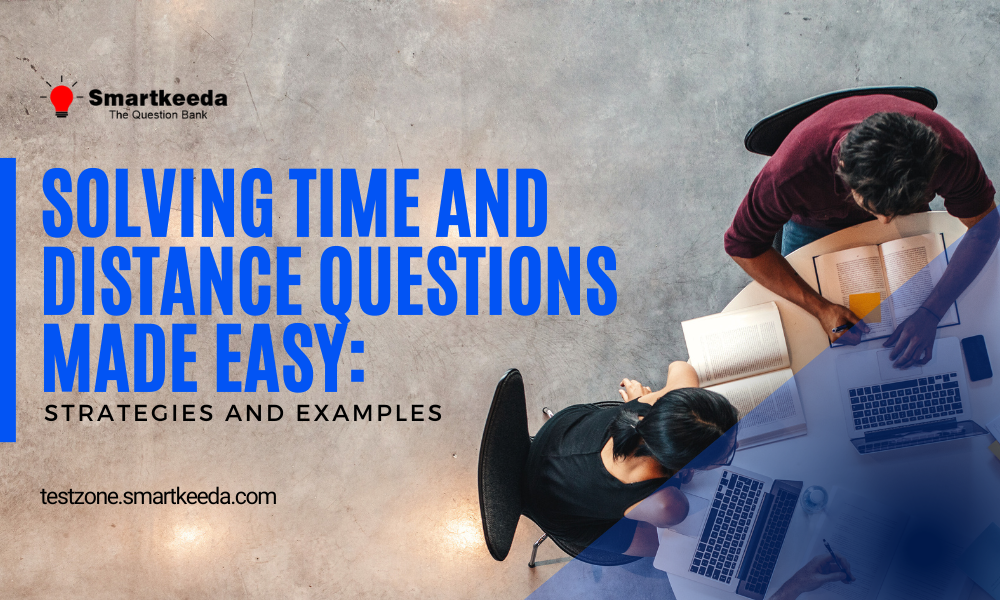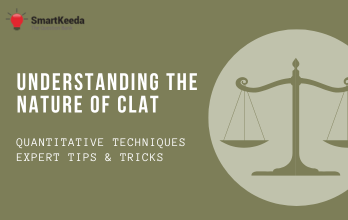
Understanding the Basics of Time and Distance: Time and distance are fundamental concepts in the realm of quantitative aptitude, a crucial section in many bank exams. Questions related to time and distance involve calculating how long it takes for an object to cover a certain distance at a given speed or determining the distance travelled within a specified time frame at a certain speed.
Key Concepts for Time and Distance Problems
- Before diving into problem-solving, it's crucial to understand the basic formulas associated with time and distance. Speed is the rate at which an object covers a certain distance in a given time.
- Time represents the duration it takes to travel a specific distance at a given speed.
- Distance is the length between two points or the total path covered.
Common Types of Time and Distance Questions
- Some problems may include scenarios where two objects are moving towards or away from each other or meeting at a point. Questions often require finding when they meet or the total distance travelled.
- For example: "Two trains are 300 kilometers apart and traveling towards each other at speeds of 60 km/h and 80 km/h. When will they meet?"
- Other common types of questions often involve calculating the relative speed when two objects are moving in the same or opposite directions.
- For example:" Two boats are moving towards each other in a river. Boat A can move at 12 km/h in still water, and Boat B can move at 6 km/h in still water. If the river flows at 4 km/h, what is the relative speed of the boats?"
- Questions may involve a train crossing a stationary object, like a platform or a bridge. You might be asked to find the length of the train or the time taken to cross a given point.
- For example: "A train 200 meters long crosses a platform in 30 seconds. What is the length of the platform?
Speed (S) = Distance (D) / Time (T). Let's break down the components of this formula:
- Speed (S): This represents the rate at which an object is moving. It is commonly measured in units such as kilometers per hour (km/h) or meters per second (m/s).
- Distance (D): This is the length between two points or the total path covered by the object. The units for distance typically include kilometers (km) or meters (m).
- Time (T): Time signifies the duration it takes for the object to traverse the given distance. It is usually measured in units like hours (h) or seconds (s).
Using the speed formula effectively is a skill that can significantly enhance your problem-solving abilities in the quantitative aptitude section of bank exams. To master this skill, practice is crucial.
Solving Time and Distance Questions Step by Step
- The most crucial step in solving any problem is to carefully read and understand the question.
- Identify what is given: Note down the information provided, such as speed, distance, or time.
- Determine what you need to find: Understand the unknown variable you're required to calculate (speed, distance, or time).
- Consider the context: Some questions involve two objects moving relative to each other or in the same direction. Understand the scenario presented in the problem.
- Select the formula that matches the information you have and the variable you need to find. Plug the known values into the appropriate formula and solve for the unknown variable. Be careful with the units to ensure consistency.
Advanced Techniques for Complex Time and Distance Problems
In scenarios where two objects are moving at angles to each other, advanced techniques are needed. Typically, trigonometry is used to calculate the relative speed's components in the direction of motion and perpendicular to it. Try:
Decompose the relative speed into its horizontal and vertical components. Use these components to solve for the time or distance required.
For example: "A boat crosses a river at 60 degrees to the river's flow at a speed of 10 km/h. If the river flows at 5 km/h, what is the boat's speed perpendicular to the river's flow?”
Solution: Find the horizontal component of the boat's speed: Horizontal Speed = Boat's Speed × cos(60 degrees); 10 km/h × cos(60 degrees) = 5 km/h
When an object travels at different speeds over segments of its journey, calculating the average speed can be complex. Use the concept of weighted averages, taking into account the time spent at each speed:
Calculate the time spent at each speed and the distance covered. Use these values to find the weighted average speed.
For example: “A car travels 100 km at 40 km/h, then 50 km at 60 km/h. What is the average speed for the entire journey?”
Solution: There are 4 steps:
Calculate the time spent at each speed segment: Time at 40 km/h = 100 km / 40 km/h = 2.5 hours. Time at 60 km/h = 50 km / 60 km/h = 0.8333 hours (rounded to 4 decimal places).
Calculate the total distance covered: Total Distance = 100 km + 50 km = 150 km.
Calculate the total time spent: Total Time = 2.5 hours + 0.8333 hours = 3.3333 hours (rounded to 4 decimal places).
Calculate the average speed: Average Speed = Total Distance / Total Time; Average Speed = 150 km / 3.3333 hours ≈ 45 km/h.
Real-Life Applications of Time and Distance Problem Solving
- When planning a trip, whether by car, train, or plane, understanding time and distance is crucial. You need to calculate travel time, consider speed limits, account for traffic, and choose routes that minimize travel time.
- Traffic engineers use time and distance calculations to design road systems, traffic signals, and pedestrian crossings. They aim to optimize traffic flow, reduce congestion, and enhance road safety.
- Courier companies use time and distance calculations to estimate delivery times, allocate packages to delivery drivers, and optimize routes to reduce fuel consumption and delivery times.
- Ambulances, fire trucks, and police vehicles rely on time and distance calculations to respond to emergencies. Quick response times can be a matter of life and death.
Putting Your Time and Distance Skills to the Test - Practice Problems
Mock tests provide a structured and practical way to assess, improve, and fine -tune your problem-solving skills. Regularly incorporating mock tests into your study routine can significantly boost your chances of success on the actual exam. Good Luck!

Author : Amrish
Hi, this is Amrish, an Assistant Manager in one of the largest private banks with an extensive background in the banking industry. Having post-graduated with honors in Finance from a renowned university, I embarked on a rewarding career in the financial services industry. With a deep understanding of their unique needs and goals for banking exams, I would love to help aspirants through my blogs. I will keep sharing insights for cracking various exams by providing tips, strategies, mistakes one should avoid, the best resources, and much more. God Speed to all aspirants!
FAQ’s
Besides above mentioned areas, monitoring and improving athletes' performance by tracking running, swimming, or cycling times and speeds are some real world scenarios.
Regular practice with your calculator is a key to becoming proficient. Work through a variety of time and distance problems to become comfortable with using your calculator effectively.
Yes, there are several shortcuts and tricks that can help you quickly solve time and distance problems and some of them are discussed in the blog, please have a look.
One of the ways is to memorize multiplication tables up to 12 or even beyond. Being able to multiply and divide quickly is invaluable in mental math.
Using the appropriate units and conversions enhances precision and accuracy. If a problem involves long distances, using smaller units like meters instead of kilometers can prevent rounding errors and lead to more accurate results.
Understanding and using relative speed effectively simplifies complex time and distance problems involving the movement of two objects in relation to each other. It's a valuable tool in problem-solving, especially in scenarios where entities move together or apart.





